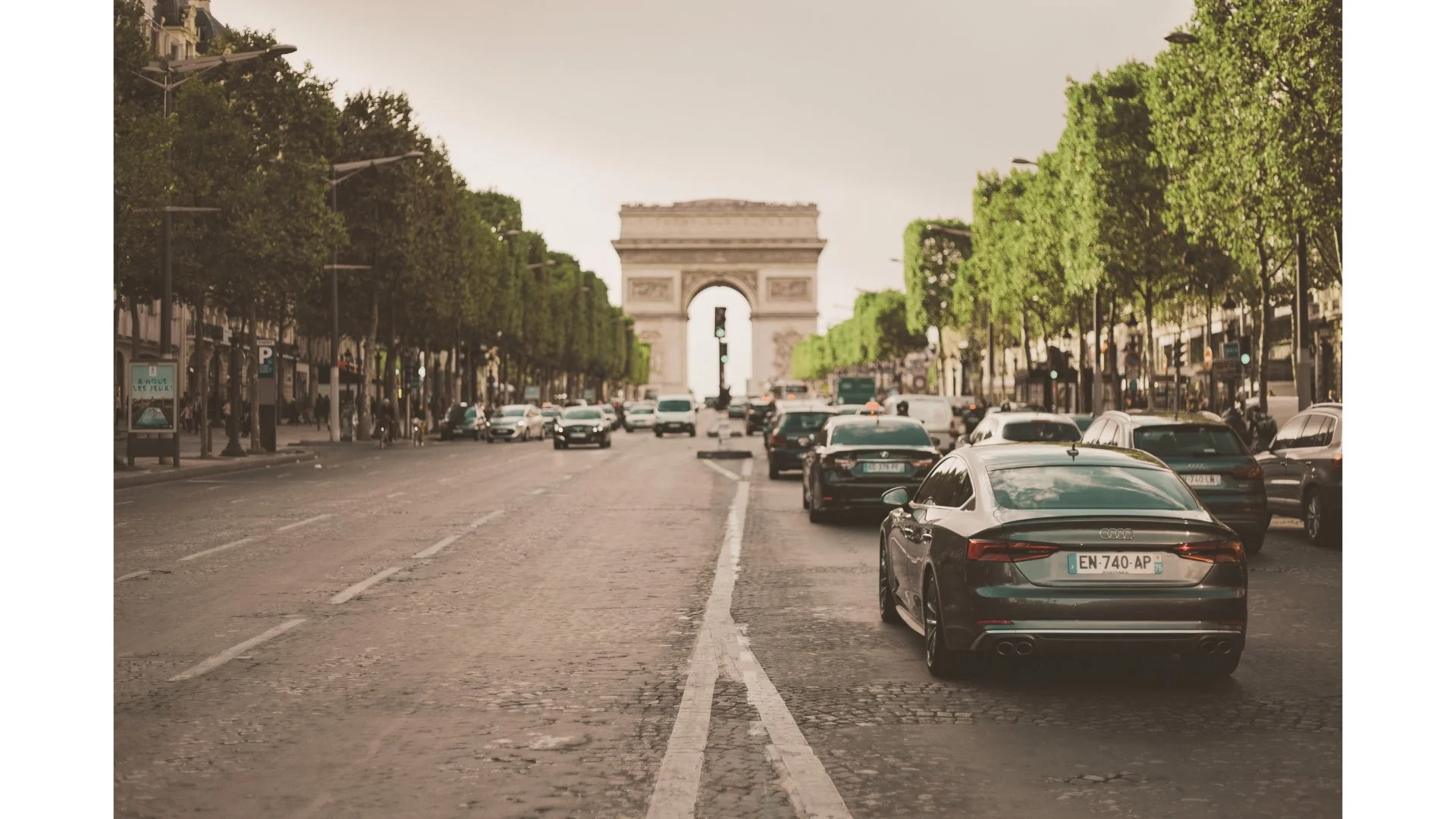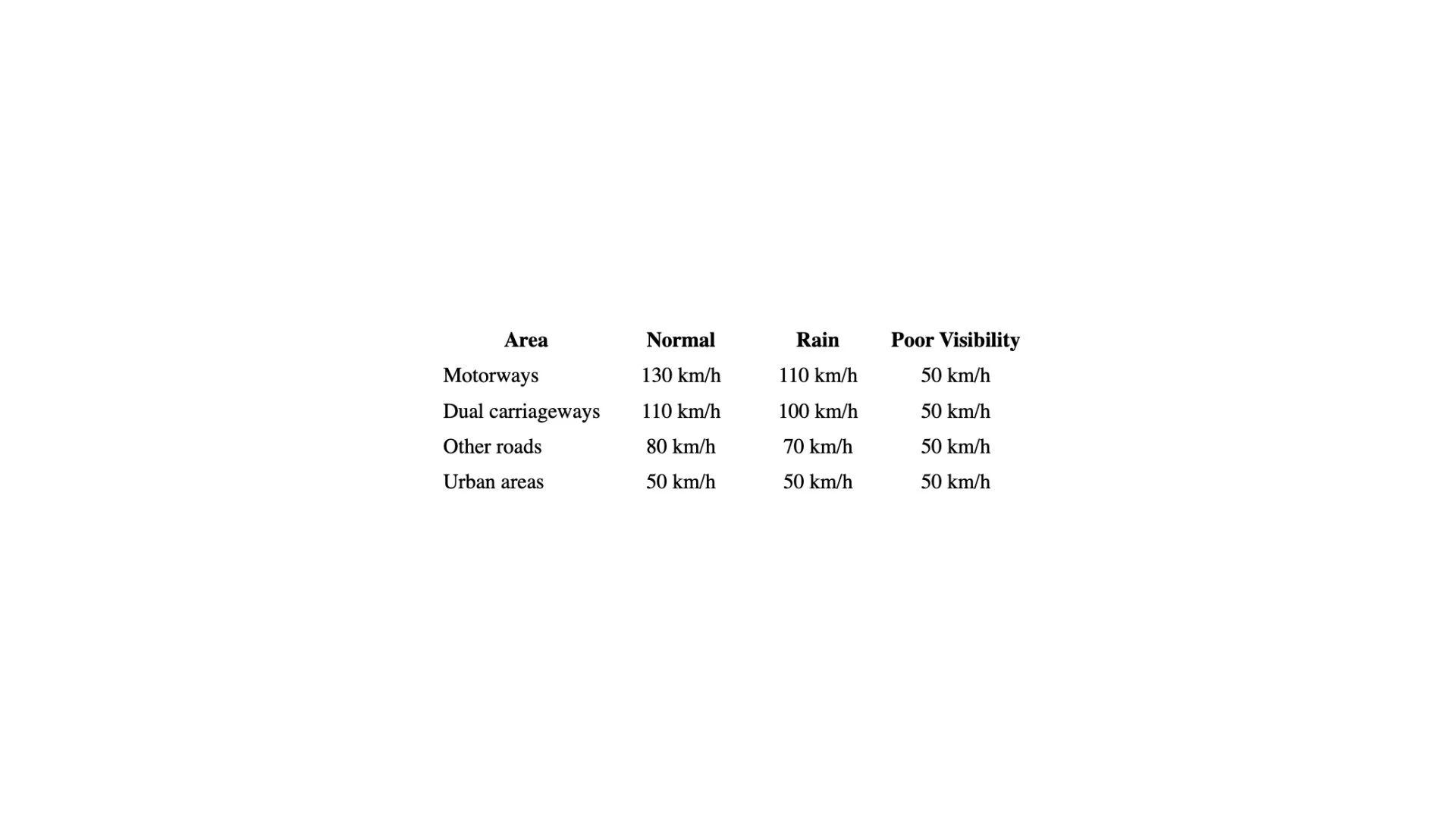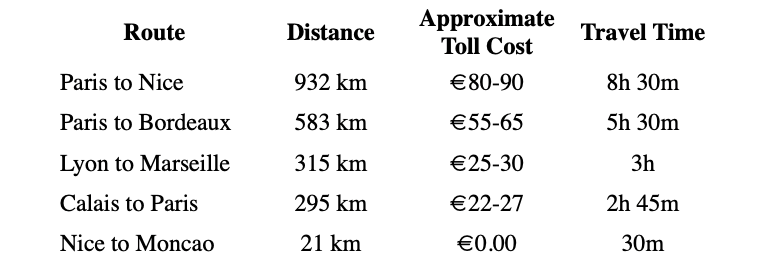Driving in France: What to Know in 2025
Published May 18, 2025
If you're thinking about driving in France, you're in for a scenic and surprisingly smooth adventure. This comprehensive guide follows your journey from preparation and legal requirements, through practical driving matters, to handling specific situations and emergencies. Whether you're planning to cruise the beautiful coastal roads of Normandy, navigate traffic in Paris, or wander through the lavender fields in Provence, we've organized everything you need to drive confidently (and legally) through the French countryside, cities, and coastlines.
1. What You Need to Drive in France
Driving Licence Laws in France
To drive in France, you must be at least 18 years old and have a full, valid driver's license. US, UK, EU, and Australian licenses are all accepted. If your license isn't in French or English, bring an International Driving Permit (IDP).
Jean-Paul: "Your license must be with you at all times. If you're pulled over and don’t have it, even tourists can be fined."
Documents for Driving in France
Always keep the following in your vehicle:
Valid driver’s license
Passport
Car registration document
Proof of insurance
If you’re renting a car in France, the rental agency usually includes all required documents in the glove compartment. Always double-check with the agency before driving away.
Car Insurance When Driving in France
Ensure your car insurance covers you for driving abroad.
Renting in France: Basic insurance is typically included in your rental agreement. If you want additional coverage, check whether your own auto insurance or the credit card you're using offers coverage for rental cars abroad. If not, you'll need to purchase extra insurance through the rental agency.
Driving your own car into France: Check with your insurer about international coverage.
Renting a car in another country and driving into France: Confirm cross-border insurance is valid and ask if a Crit'Air sticker is included.
Jessica: "When I rented a car in Switzerland and crossed into France, I had to double-check if their insurance covered me. It did, but not all companies do."
Mandatory to Have in the Car
You are legally required to carry:
Reflective safety vests
Warning triangle
First aid kit
Headlamp beam deflectors
If you're renting a car in France: These items are usually included. Ask the rental agency to confirm. If you’re bringing your own vehicle or renting outside of France, you may need to purchase a "driving in France kit."
Jean-Paul: "French police do roadside checks, especially near borders or toll areas. Missing even one item could mean an instant fine."
Is There Anything You Shouldn't Take With You?
Yes. When entering France from a non-EU country (like the US or UK post-Brexit), you cannot bring certain food items without official inspection and certification.
Here’s what’s prohibited unless you have the proper documentation:
Meat and meat products (like sausages, ham, jerky)
Milk and dairy products (cheese, yogurt, milk-based snacks)
Fresh fruits and vegetables, unless you have a phytosanitary certificate
Exceptions: bananas, coconuts, dates, pineapples, and durians.
For full and up-to-date details, check the official EU guidance or the French Douanes (customs) website.
2. Renting or Hiring a Car in France
Rental Information
Minimum age is typically 21. You’ll need:
A valid license held for at least 1 year
A passport
A credit card for deposit
Jessica: “I always rent after leaving Paris. City traffic is hectic and parking is beyond frustrating.”
Jean-Paul: "Renting from train stations or regional airports is usually quicker and cheaper than city center locations."
3. French Driving Laws & Road Rules
French Rules of the Road
Drive on the right
Overtake on the left
Priority to the right unless otherwise posted
Yield to traffic in roundabouts
Jean-Paul: "Many tourists forget that even on small roads, the rule of 'priorité à droite' still applies. Watch for signs."
Seat Belt Law in France
Seat belts are required by law for everyone in the vehicle, front and back, no exceptions. If a child under 18 isn’t buckled in properly, it’s the driver who gets the fine.
Traffic Lights
No yellow light after red (unlike Germany and some other countries). In France, it goes red → green → yellow → red.
No right turn on red (unlike the US)
Flashing yellow = proceed with caution
Red + yellow arrow = you can turn, but yield
Road Markings
White lines = standard
Yellow zigzag = bus stop
Yellow lines at curb = no stopping or parking
French Traffic Signs
Most signs follow EU standards. Learn key ones before you go, especially Vous n’avez pas la priorité (you don’t have the right of way).
Want help decoding signs before your trip? Check out our post: 6 French Road Signs That Confuse American Drivers (And What They Actually Mean)
French Speed Limits
Jean-Paul: "These speed changes in rain catch many visitors off guard. Look for road signs showing the weather-adjusted limits."
Speed Camera Detectors in France
Using any device that detects or warns about speed cameras, including radar detectors and certain GPS apps, is strictly prohibited in France. This includes features that display fixed camera locations as points of interest.
Jean-Paul: "If you’re caught with a radar detector, you could face a fine of up to €1,500. And in some cases, the police may even confiscate the device or the vehicle."
The EU Cross-Border Enforcement Directive
Thanks to a European-wide agreement, if you commit a traffic offence in France and your vehicle is registered in another EU country (or the UK), the French authorities can still send you a fine after you return home. That means speeding tickets, red light violations, and other infractions don’t just disappear.
Jessica: "Don’t assume you’re off the hook just because you’re a tourist. I once got a ticket from a speed camera mailed to me weeks after my trip."
Jean-Paul: "If you receive a fine, it's best to pay or respond quickly. You usually have 30 days to contest or settle it."
4. Driving Conditions and Road Types
Roads in France
A roads (Autoroutes) = toll motorways
N roads = national roads
D roads = departmental roads (can be small or busy)
Jean-Paul: "Some of the most beautiful villages are hidden along D roads."
Villages Étapes
Villages Étapes (pronounced vee-lazh ay-tahp) are small towns just off national roads that offer a charming alternative to motorway rest stops. Each one is certified for providing essentials like fuel, toilets, and food — but with a local, welcoming feel.
Jean-Paul: “They’re perfect for taking a break. Many offer local specialties and a peaceful park or square. Look for the brown road signs with ‘Village Étape’ written on them.”
Aires d’Autoroutes (French Highway Rest Stops)
Aires d’autoroutes (pronounced air doe toe route) are rest areas along France’s motorways designed for all drivers. They range from basic stopovers with just a picnic table and toilets, to full-service rest areas with fuel stations, restaurants, bakeries, and playgrounds. And on average you can find one about every 15km (although not every one will have the services you’re looking for).
There are two types:
Aire de repos – a basic rest stop with parking and picnic facilities
Aire de service – offers fuel, restrooms, food, and other travel essentials
Jean-Paul: “It’s best to stop at any Aire that has businesses (gas, restaurants, etc.) as they are much safer than the basic ones without any services.”
Jessica: “They’re not your average highway stop. We’ve had fresh croissants and espresso at some — it’s a great way to take a real break while still making progress on your trip.”
France Toll Roads
Plan routes with apps like ViaMichelin to estimate tolls and fuel. Also, the official Autoroutes.fr website provides an up-to-date toll calculator that accounts for your specific vehicle type and class.
Popular Route Toll Estimates (2025)
Money-Saving Tip: Consider taking the "routes nationales" (N roads) instead of toll highways for shorter trips. While they add some travel time, the scenery is often better and you'll save significantly on tolls.
Driving in Paris
Although you can drive in Paris, we don’t recommend it. Between the heavy traffic, confusing intersections, streets that are only for busses and incredibly tight parking, it's usually more stressful than it's worth.
Jean-Paul: “Even Parisians avoid driving in Paris. Finding parking is like winning the lottery.”
Jessica: “It’s just not worth the hassle if you're staying in town.”
Gas stations inside Paris are few and far between (and underground), and prices tend to be higher than elsewhere in France. It’s a smart move to fill up before entering the city or just outside the périphérique (ring road).
Jean-Paul: “You’ll sometimes find stations along the périphérique, but they can be busy. In small towns just outside Paris, prices are better.”
5. Fuel, Refuelling & Electric Charging
Refuelling in France
French fuel pumps are labeled differently than in the U.S., so it’s important to know what you’re looking for:
Essence (E10 or SP95-E10): Regular unleaded
SP98: Premium unleaded
Gazole: Diesel fuel
GPL (LPG): Liquefied Petroleum Gas (less common)
If you’re renting a car, check the fuel type printed inside the fuel flap or on your rental agreement.
Jean-Paul: “Diesel (gazole) is common in France, especially in older rental cars. Don’t assume it’s petrol.”
Jessica: The price listed is in liters, not gallons. So be prepared for sticker shock. It’s about 1.5x to 2x more expensive to fill up in France than the US.
Electric Vehicle Infrastructure in France
France has made significant strides in EV infrastructure since 2023, making electric travel more viable for tourists:
Fast-Charging Network
As of early 2025, France has expanded its fast-charging network to cover:
Over 80,000 public charging points nationwide
98% of autoroutes equipped with at least one fast-charging station every 60km
Average charging time reduced to 20-30 minutes for 80% capacity on newer stations
EV-Friendly Areas
Paris Region: The Île-de-France now boasts over 12,000 charging points, with priority parking for EVs in many locations.
The Electric Corridor: The route from Paris to the Mediterranean (A6/A7) now features ultra-fast chargers (150-350kW) at every major service area.
Rural Coverage: The "Recharge Rurale" initiative has increased charging availability in previously underserved areas like Brittany, Dordogne, and the Alps.
Practical Tips for EV Travelers
The Chargemap pass works with 80% of public charging networks in France
Most charging stations accept standard credit cards for payment
Hotel chains like Accor and Logis now offer overnight charging at most locations
The "Bornes de France" app shows real-time availability and waiting times
Plan for 30-45 minute breaks every 200-300km for optimal charging efficiency
6. Penalties and Fines in France
On-the-Spot Fines
French police can issue and collect fines on the spot for many driving offenses. If you’re stopped for speeding or a missing safety item, you may be asked to pay up to €750 immediately.
General Fine Ranges
Fines range from €11 for minor parking violations up to €4,500 for serious offenses like DUI or driving without a license. Repeat offenders or reckless drivers may also have their vehicle temporarily confiscated.
Speeding Fines in France
Up to 20 km/h over: €68–€135
More than 50 km/h over: €1,500, potential license suspension or vehicle seizure
Jessica: “I once got a speed camera ticket weeks after returning home. Don’t assume you’re invisible just because you’re not local.”
Common Offenses That Carry Fines
Not wearing a seatbelt
Using your phone while driving
Speeding
Jean-Paul: “French police don’t give many warnings. If you break the rules, expect to pay.”
Confiscation of Vehicles
Applies to extreme speeding, DUIs, or repeat offenses.
7. Alcohol Limit and Breath Tests
Alcohol Limit When Driving in France
Regular drivers: 0.5g/l
New drivers (driving for less than 3 years): 0.2g/l
Jessica: “That’s basically one glass of wine. I play it safe and don’t drink at all if I’m driving.”
8. Driving with Children in France
Child Car Seat Rules in France
Children under 10 must ride in the back seat unless there are no rear seats available. French law requires kids up to age 10 to use a child restraint that matches their size and weight. These are grouped into categories used across the EU:
Group 0 / 0+: Rear-facing seat for infants up to 13 kg
Group 1: Forward-facing seat with harness, 9–18 kg
Group 2: Booster seat with adult belt, 15–25 kg
Group 3: Booster cushion with adult belt, 22–36 kg
Jessica: “Bring your own car seat if you can. Not all car rental locations carry every size and if they do, the daily rate quickly adds up.”
9. Parking in France
Park on the right side of two-way streets
Yellow solid lines = no parking/stopping
Wheel clamps and towing are common in cities
Use meters or apps in paid zones
Disabled drivers: free parking in most areas with badge
Jean-Paul: “In Paris, don’t take chances. Even five minutes in a no-parking zone can cost you.”
10. Emergencies and Breakdowns
In an Emergency
Dial 112 (Europe-wide)
Put on your vest and place the triangle
Dead Battery?
Call your rental car company or breakdown assistance provider. In France, this service is known as “assistance dépannage” (roadside assistance). It covers things like towing, dead batteries, and flat tires.
Jessica: “I once needed a jumpstart in rural Provence. The roadside service came in 30 minutes!”
11. French Driving Culture & Etiquette
Understanding the unwritten rules of French roads can make your driving experience smoother and less stressful:
Communication on the Road
Headlight Flashing: Unlike in some countries, a quick flash of headlights often means "I'm letting you go ahead" rather than "get out of my way." However, repeated flashing typically indicates frustration.
Horn Use: In cities, horns are used much more frequently than in countries like the UK or US. A short "beep" is often just a communication tool rather than an expression of anger. However, excessive honking in residential areas between 10pm-7am is prohibited.
Hand Gestures: A raised hand is commonly used as a thank-you gesture when someone lets you merge or gives way.
Lane Discipline
French drivers generally maintain better lane discipline than Americans might expect:
The left lane on highways is strictly for overtaking
Cruising in the middle or left lane is considered poor etiquette and may result in tailgating
After overtaking, return to the rightmost lane as soon as safely possible
Parking Etiquette
Bumper Touching: In Paris and other densely populated cities, light contact between bumpers while parallel parking is common and generally accepted. This explains why you'll see many cars with scratched bumpers.
Hazard Lights: Using hazard lights for 1-2 minutes while making a quick stop (like for a baguette!) is tolerated in small towns, though not technically legal.
Road Rage Management
Aggressive tailgating is more common than confrontational behavior
If you make a mistake, a simple apologetic wave often diffuses tension
"Priorité à droite" confusion is a common source of frustration, so when in doubt, yield!
Regional Differences
Mediterranean Coast: Expect more aggressive driving, particularly around Nice and Marseille.
Rural Areas: Driving is generally more relaxed, but be prepared for farmers occasionally using roads to move equipment.
Alpine Regions: Locals drive mountain roads much faster than tourists so use pullouts to let faster traffic pass.
Jean-Paul: "If you're hesitant at a roundabout or junction, just wait. French drivers will go around you rather than wait for you to make a decision you're uncomfortable with."
12. FAQs About Driving in France
What is driving in France like?
Jean-Paul: “We take pride in our roads. Outside the cities, it's calm and beautiful.”
Jessica: “Just watch for roundabouts and toll booths.”
How hard is it to drive in France for tourists?
If you're used to driving on the right and understand signs, it's pretty easy. Roundabouts and narrow village roads might take getting used to (a two lane countryside road may feel like a one-way only in the US). The hardest part is being aware of the things you don’t think about when you drive in the US, like who has the right of way or not turning on a red light even if there is no sign.
What do I need to drive in France as a tourist?
License, passport, registration, insurance, safety gear (vest, triangle, etc.)
Can I drive in France with a US, UK, or Australian license?
Yes. Just make sure it’s valid and readable. Bring an international drivers licenese if needed.
What is the legal alcohol limit for drivers in France?
0.5g/l for most, 0.2g/l for new drivers. Play it safe and don’t drink at all.
Are tolls expensive in France?
They add up. Use ViaMichelin to estimate costs.
What happens if I get caught speeding in France?
Fines are issued on the spot or by mail. Police can seize your car for extreme offenses.
What do I do if my car breaks down in France?
Exit safely, put on your vest, place the triangle, and call your rental or roadside assistance provider (breakdown service).
Bon voyage and safe travels!












